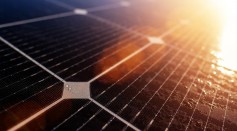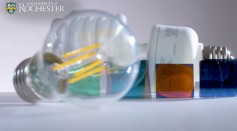photovoltaics

Reverse Solar Panel Generates Electricity Without Sunlight by Emitting Heat to Cold Night Skies
Electric Cars Charged With Power From Photovoltaic Systems at Home Demonstrate Smart Charging From Renewable Energy
Solar Cell Enhancement: New Research Reveals Perovskites with High Photovoltaic Efficiency

How Does Light-Induced Degradation Reduce Efficiency of Silicon Solar Cells? Scientists Explore This Problem

New Optical Coatings Reflect and Transmit Colors of Impressive Purity
Rock-Star Material Could Become Cheaper Alternative for Solar Cells
New Addition Cuts Down Solar Panel Prices While Increasing Efficiency
In the Face of Climate Change the Western United States Faces An Energy Crisis Far Too Real
Most Popular

Innovative BLAST Patch Could Stop Skin Infections with Harmless Electric Currents

Cold, Not Heat, Caused Mass Extinction 201.6 Million Years Ago: New Study

The Pompa Program: A New Model in Thyroid Wellness

Why It's So Difficult to Lose Weight: The Biological Explanation Behind Obesity






